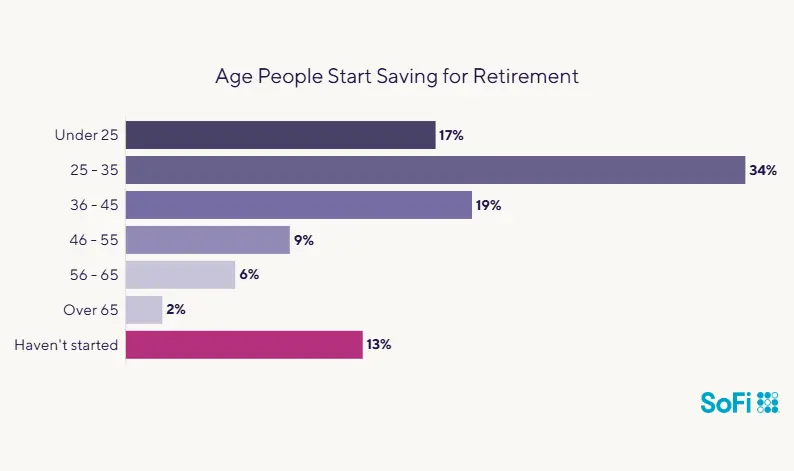Filling Out FAFSA for Divorced Parents
The Free Application for Federal Student Aid or FAFSA® form is required for students who are interested in receiving federal financial aid. Dependent students must report parents’ information when they fill out the FAFSA form, but this can become complicated when a student has parents who are divorced.
The federal government treats divorced parents differently than parents who are married. Understanding the requirements for the financial information required by the FAFSA could help students improve their chances of receiving federal student aid and potentially lower the amount of student loans they need to obtain a degree.
Continue reading for more information on filling out the FAFSA if your parents are divorced or separated.
Table of Contents
Key Points
• For divorced parents, FAFSA requires financial information from the parent who provided more financial support.
• If the parents split financial support equally, the parent with the greater income must complete the FAFSA.
• If divorced parents still live together, FAFSA requires reporting both parents’ information.
• If the contributing parent is remarried, you may need to include your stepparent’s financial information on the form.
• Beyond federal aid, students can explore scholarships, grants, part-time jobs, and private loans to cover gaps in tuition and living costs.
What Complicates FAFSA for Divorced Parents?
The FAFSA treats parents who are divorced differently than it treats parents who are married. If a student’s parents are married, information about both parents must be included on the FAFSA form. If a student’s parents are divorced or separated, the parent who provided more financial support during the last 12 months is considered “the contributor” and must provide their information. If both parents provided an equal amount of financial support, the parent with the greater income and assets is the contributor and must provide their information.
If the contributing parent has remarried by the time a student is filing the FAFSA, your stepparent is considered a parent if they have adopted you. If they haven’t adopted you, the form may still prompt your parent to provide your stepparent’s information depending on their tax filing status.
Recommended: Important FAFSA Deadlines for Students and Parents
FAFSA Tips for Students with Divorced Parents
Here are some important questions to ask yourself and tips for completing the FAFSA application with divorced parents:
Who to Count as Parents for FAFSA
According to the FAFSA, a “parent” means your legal (biological and/or adoptive) parent.
If your parents are divorced, the FAFSA requests information from the parent who provided more financial support during the previous 12 months. If both parents shared support equally, you’ll provide information for the parent who earns more.
If your parent is remarried, you may need to provide information on the stepparent, as well.
What Is a Custodial Parent?
In the past, FAFSA defined a custodial parent as the parent you spend the most time living with during the year. The parent responsible for filing the FAFSA is now determined based on whichever parent provides more financial support to the student.
What About Stepparents and Common-Law Spouses?
Generally, you’ll need to provide the financial information for a stepparent who is married to the custodial parent.
Should Alimony Be Included as Income?
Any alimony or child support received by the custodial parent should be reported on the FAFSA.
Parent’s Education Level
The FAFSA will ask you to include the education levels of your parents. You only need to include information about either your birth or adoptive parents. In this section, the FAFSA does not need information about your stepparent.
What If My Divorced Parents Still Live Together?
If your parents live together, but are divorced, the marital status should be “Unmarried and both legal parents living together.” You need to provide information about both of them on the FAFSA form.
If your parents live together, but are separated, the marital status should be “married or remarried.” Do not use “divorced or separated.” You should provide information about both of them on the FAFSA form.
Additional Sources to Finance Tuition
Many students seek alternative financial aid to finance college if they do not qualify for federal aid or if the amount of federal aid allocated will not cover the entire tuition cost.
About half of college tuition and living expenses are paid by the income and savings of a student’s family members, according to a Sallie Mae study, “How America Pays for College 2025.”
Federal Aid
There are many other sources that could help a student obtain funding for tuition, books, and living expenses. When filling out the FAFSA, students are applying for federal financial aid. This includes federal student loans, the federal work-study program, and some federal grants. However, many states and colleges use the information from the form to award their own grants, scholarships, and loans.
Federal aid is provided on a first-come first-served basis, so it can potentially be helpful to file your FAFSA early. Check out even more detailed information in SoFi’s FAFSA guide.
Federal student loans can be either subsidized or unsubsidized.
Subsidized federal loans are given to students based on financial need. The interest on these loans is subsidized by the federal government, which means students will not be responsible for repaying the interest that accrues while they are enrolled at least part time or during their grace period.
Unsubsidized loans are not awarded based on need and will begin accruing interest as soon as the loan is disbursed.
Recommended: Types of Federal Student Loans
Scholarships
If federal aid is not enough to cover the cost associated with attending college, there are other options available to help you pay for college. Two sources of funding are grants and scholarships. These are highly sought after by students because they do not have to be repaid. Many of them require students to apply annually.
SoFi’s Scholarship Search Tool can help you find scholarships based on your location, level of study, and more.
Part-Time Job
Some students may also consider getting a part-time job to help pay for tuition or living expenses. Consider looking both on and off campus, or even online.
Private Student Loans
When other financial aid isn’t enough, private student loans can fill the funding gap for expenses like tuition, housing, and books.
Private student loans are offered by private organizations, like banks or online lenders, and can be more expensive than federal student loans. They also don’t come with the same borrower protections as federal loans, like deferment or income-driven repayment. That’s why private student loans are generally considered an option after students have exhausted all other sources of financing.
The loan terms and interest rate will vary from lender to lender and will likely be determined by the borrower’s financial history and credit score. Those interested in borrowing a private loan should consider shopping around with various lenders to find the best fit for them.
The Takeaway
Navigating the FAFSA process can be complex, especially for students whose parents are divorced or separated. The key is to correctly identify the “contributor” parent based on who provided more financial support, and to understand how stepparents and living arrangements can impact the application. By understanding these nuances and exploring all available funding options — including federal aid, scholarships, grants, part-time jobs, and private student loans — students can maximize their chances of securing the financial assistance needed for their education.
If you’ve exhausted all federal student aid options, no-fee private student loans from SoFi can help you pay for school. The online application process is easy, and you can see rates and terms in just minutes. Repayment plans are flexible, so you can find an option that works for your financial plan and budget.
FAQ
Does FAFSA require both parents’ income if they are divorced?
If your parents are divorced, you’ll generally report the information for the parent who provided the most financial support for the past 12 months. If your parents split financial support equally, then the parent with the greater income is responsible for completing the FAFSA.
How do you determine who parent 1 and parent 2 are for FAFSA?
The FAFSA doesn’t currently specify a parent “1” or “2.” Instead, it directs you to provide information for the “parent” (if your parents are divorced, this would be the parent who provided more financial support in the past 12 months), then provide information for the “parent’s spouse or partner.”
What is the maximum parent income to qualify for FAFSA?
There are no income limits when it comes to filling out the FAFSA or qualifying for federal financial aid. Even if your parents are high earners, you could still qualify for certain types of aid, such as scholarships or federal student loans. The FAFSA application is free to fill out, so it’s almost always worth taking the time to do so.
SoFi Private Student Loans
Terms and conditions apply. SOFI RESERVES THE RIGHT TO MODIFY OR DISCONTINUE PRODUCTS AND BENEFITS AT ANY TIME WITHOUT NOTICE. SoFi Private Student loans are subject to program terms and restrictions, such as completion of a loan application and self-certification form, verification of application information, the student's at least half-time enrollment in a degree program at a SoFi-participating school, and, if applicable, a co-signer. In addition, borrowers must be U.S. citizens or other eligible status, be residing in the U.S., Puerto Rico, U.S. Virgin Islands, or American Samoa, and must meet SoFi’s underwriting requirements, including verification of sufficient income to support your ability to repay. Minimum loan amount is $1,000. See SoFi.com/eligibility for more information. Lowest rates reserved for the most creditworthy borrowers. SoFi reserves the right to modify eligibility criteria at any time. This information is subject to change. This information is current as of 4/22/2025 and is subject to change. SoFi Private Student loans are originated by SoFi Bank, N.A. Member FDIC. NMLS #696891 (www.nmlsconsumeraccess.org).
SoFi Bank, N.A. and its lending products are not endorsed by or directly affiliated with any college or university unless otherwise disclosed.
Please borrow responsibly. SoFi Private Student loans are not a substitute for federal loans, grants, and work-study programs. We encourage you to evaluate all your federal student aid options before you consider any private loans, including ours. Read our FAQs.
SoFi Loan Products
SoFi loans are originated by SoFi Bank, N.A., NMLS #696891 (Member FDIC). For additional product-specific legal and licensing information, see SoFi.com/legal. Equal Housing Lender.
External Websites: The information and analysis provided through hyperlinks to third-party websites, while believed to be accurate, cannot be guaranteed by SoFi. Links are provided for informational purposes and should not be viewed as an endorsement.
Non affiliation: SoFi isn’t affiliated with any of the companies highlighted in this article.
SOISL-Q425-003
Read more






